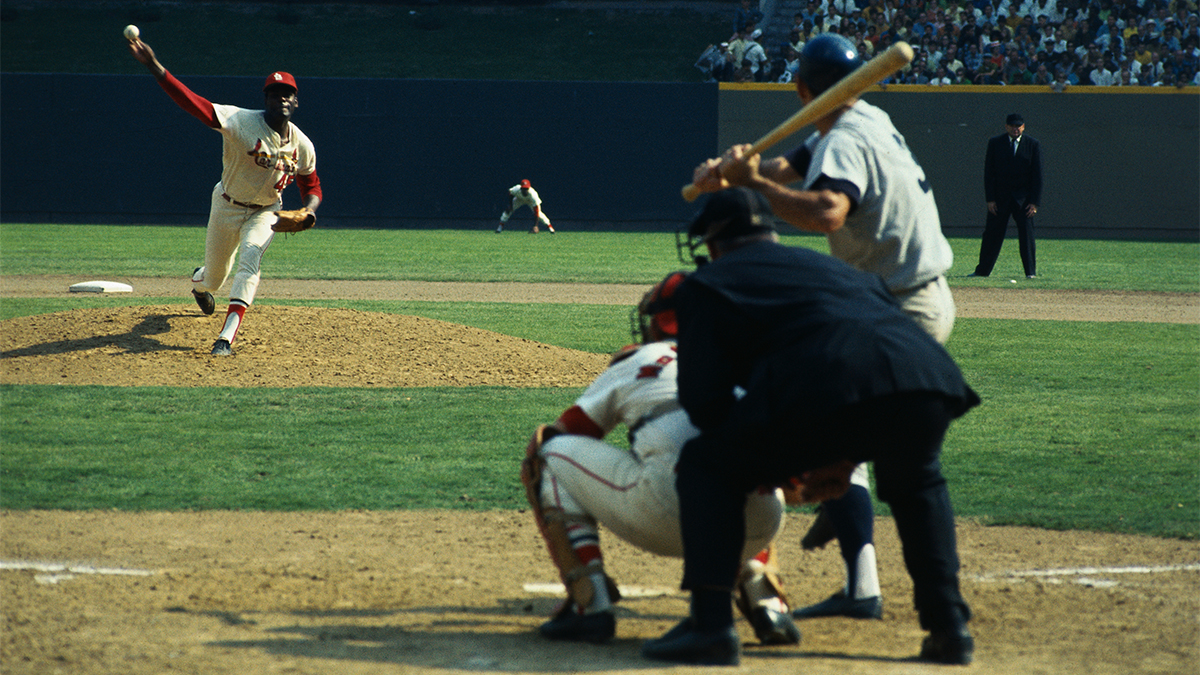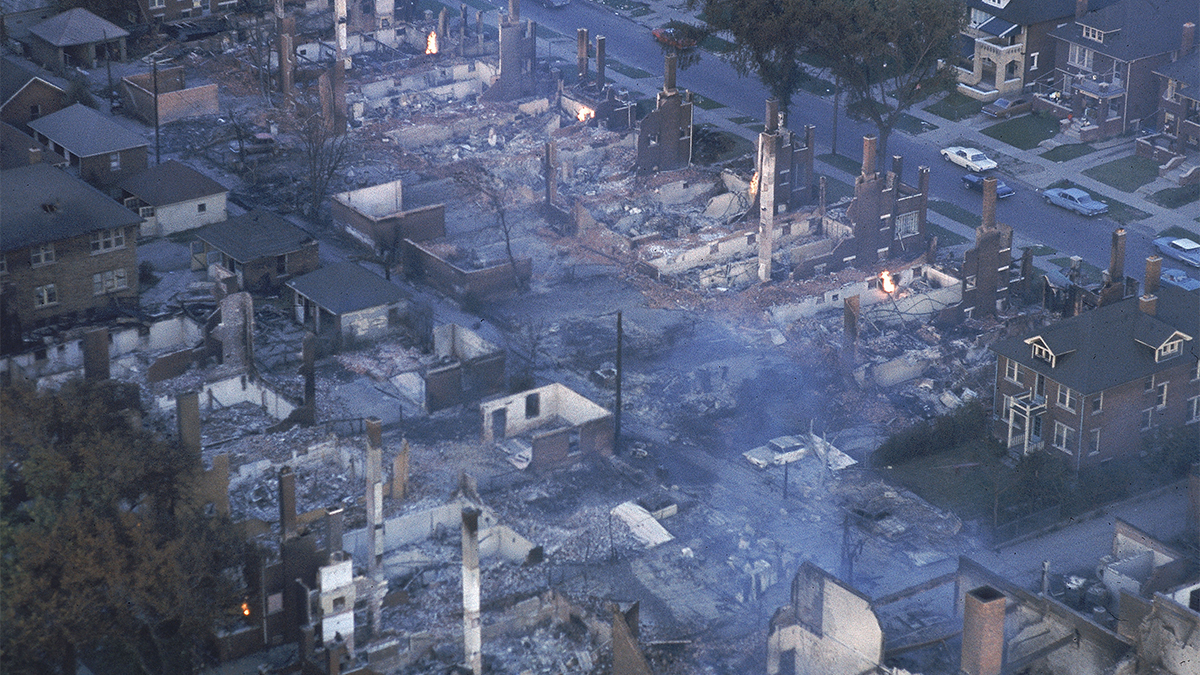In 1968 baseball showed black, white, Hispanic players could get along

As we commemorate the 50th anniversary of the seminal moment of the Mexico City Games, when Americans John Carlos and Tommie Smith raised a black-gloved fist from the medals podium, GlobalSport Matters looks back at the year from a global sporting perspective. From the World Series helping a wounded Detroit heal to athletic innovations that trace their origins to those Olympics, 1968 served as a critical pivot point in the role sports plays in society and introduced the modern era of athlete activism. To see all of our stories, please click here.
No Major League Baseball team has likely been under more pressure at the start of a season than the 1968 Detroit Tigers. Not only were expectations sky high for a postseason run — the Tigers had finished one game behind the pennant-winning Boston Red Sox the year before — but also several local officials turned to the ballclub in an effort to quell civil unrest.

The summer before the worst riots since the Civil War had ravaged the Motor City. Authorities needed five days to restore order, and when it was over 43 were dead, 7,200 arrested and more than 2,000 structures had burned, many to the ground.
“Those were hard times,” said Gates Brown, the team’s top pinch-hitter. “Sometimes it was too much. I mean it just broke your heart. But we, as a team, found a way to hang together and perhaps show people that everyone can get along — black, white, whomever.”
None of the Tigers were under more scrutiny at the time than Brown and the other African-American players on the roster: Earl Wilson and Willie Horton. Time and again they rose to the occasion and not only helped the Tigers capture their first championship in 23 years but also enabled the city to take a major step back from the abyss.
[beauty_quote quote='“Those were hard times. Sometimes it was too much. I mean it just broke your heart. But we, as a team, found a way to hang together and perhaps show people that everyone can get along — black, white, whomever.” - Detroit Tigers' pinch hitter Gates Brown ']
Horton, who had grown up in the projects a few blocks north of old Tiger Stadium, was perhaps the most disheartened by the riots. After all, he had tried to stop them. On July 23, 1967, he rushed from the home clubhouse, still wearing his Tigers uniform, stood atop a cab as the crowds grew, pleading with people to please stop.
“People knew immediately who I was,” Horton said. “What I remember today is that they were so concerned for me, that I might get hurt. That’s when they told me to go home. It looked like it was a war out there. I’ve never seen stuff like that – burning buildings, looting, smoke everywhere. They said, ‘Willie, you best go home.’”
What few in the crowd realized was Horton had joined the fight for equal rights long before. Six seasons earlier, Horton had signed with the Tigers and arrived in Lakeland, Fla., the team’s longtime spring training home. Nothing prepared him for the rude reception he received at the local bus depot. After gathering his luggage, he tried to hail a cab. But none stopped. Slinging his duffel bag over his shoulder, he walked several miles to Tiger Town.

Soon afterward, he decided to make Lakeland more welcoming to people of color. In 1965, Horton began to integrate the local movie theater and parks. Detroit general manager Jim Campbell once asked Horton what he was trying to accomplish in Lakeland and Horton replied, “I don’t know, but I think I should do it.”
Horton and Brown were roommates on the Tigers. While William “Gates” Brown didn’t take public stands like his friend, he did his part in that season.
Brown excelled at playing baseball in prison of all places. Arrested for breaking and entering at the age of 18, he was sentenced to a short stretch in the Mansfield Reformatory in Ohio. Movie fans will recognize that facility as the backdrop for “The Shawshank Redemption.” Brown played on a team there and was discovered by Pat Mullin, then the Tigers’ top scout. Soon after Brown drove a ball well over the outfield fence, the ballclub signed him to $7,000 contract when he was released.
Once asked what he had majored in back in high school, Brown replied, “I took a little English, a little mathematics, some science, some hubcaps, some wheel covers.”
In the summer of ’68, thanks in part to the timely hitting by Brown and Horton, the Tigers rallied time and again in the late innings. In doing so, they captivated hometown fans and quieted a city that had been on edge the year before.
The two local newspapers — the Detroit News and the Detroit Free Press — had gone on strike the previous November. The work stoppage lasted 267 days, well into the ’68 season. Despite being out of work, several of the Tigers’ beat writers continued to follow the team. They, like many of the fans, realized something memorable was happening.
[beauty_quote quote='“Bob and I reached a meeting of the minds that morning. That was the kind of talk we often had on the Cardinals.” - St. Louis Cardinals catcher Tim McCarver ']
Without the daily newspapers, well before the Internet and cable TV highlights, Tigers fans tuned in broadcaster Ernie Harwell. Some fans would gather on a street corner, huddled around transistor radios, listening to Harwell, hoping for another late-inning comeback. The year before, such gatherings would have been a sign of trouble. Yet Detroit police soon discovered that in 1968 such impromptu gatherings were all about following the Tigers’ magical run.
Ties that bind were a major reason for the rise of the other World Series contender in 1968 – the St. Louis Cardinals
The morning after Dr. Martin Luther King was assassinated, Tim McCarver tried to discuss the tragic news with teammate Bob Gibson. The Cardinals’ staff ace wouldn’t hear of it, telling McCarver that it was impossible for whites, no matter how well intentioned, to understand how he was feeling that morning. It didn’t help that McCarver was from Memphis, of all places, and the son of a police officer.
Yet McCarver stood his ground, telling Gibson that it was possible for people to change. If anything, he was a prime example. McCarver reminded Gibson that when the catcher was new to the big-league team, Gibson and Curt Flood teased him about his reluctance to share a sip of soda offered by a black man.
“Bob and I reached a meeting of the minds that morning,” McCarver later said. “That was the kind of talk we often had on the Cardinals.”
The ’68 season culminated with St. Louis returning to the World Series, ready to defend its title against the Detroit Tigers. In Game 1, Gibson threw a gem for the ages, with McCarver behind the plate.
“I’ve never seen anybody pitch like that before,” said the Tigers’ Al Kaline.
In the ninth inning, Dick McAuliffe singled, giving the Tigers hope. But Gibson proceeded to strike out Kaline to tie Sandy Koufax’s single-game World Series record of 15 Ks, which had been set in 1963.
When McCarver stepped toward the mound, trying to tell Gibson that he had tied Koufax, the Cardinals’ star waved him back behind home plate. But once again McCarver stood his ground.
The catcher pointed at the scoreboard, which now heralded the accomplishment. Finally, the pitcher realized what the ruckus was all about.
“All right, now give me the ball,” Gibson told McCarver.
Then he promptly broke the record by striking out Tigers first baseman Norm Cash and Horton to close the game. After such a performance, the Cardinals appeared poised to repeat as world champions, especially with Gibson scheduled to pitch again in Games 4 and, if need be, 7. Gibson won his next outing, a 10-1 laugher that gave St. Louis a 3-games-to-1 lead in the Series.
Yet Detroit battled back, forcing a deciding Game 7. Fittingly, the championship was decided by a play that would be discussed and debated for years to come.
In the top of the seventh inning, Cash and Horton singled for Detroit. Next up was Tigers outfielder Jim Northrup, and he improbably smashed a line drive off Gibson deep to center field.
When the ball left the bat, the Cardinals’ ace turned to follow its flight. His first reaction? Cardinals center fielder Curt Flood would catch it.
Northrup took a glance skyward, too. “All I knew is that I’d smashed it,” he said.
In 1968, only the top club from the National League and American League went directly to the World Series. For this was the end of an era in the grand game, and many who took the field that October, either for the favored Cardinals or the upstart Tigers, soon realized it.
“You may not have known how big it was at the time,” Brown said. “But as the years went by and you see more and more teams make it into the postseason, some with shaky records, you see what you did. Back in ’68, you had to prove it over the long haul of the regular season and then take it up a notch for the World Series. We won’t see those days again.”
The Cardinals and Tigers excelled, on and off the field, when the nation arguably needed them the most. For 1968, as author Hampton Sides said, was as close as we’ve come to a second Civil War in this country. The country had been torn apart by the assassinations of Dr. Martin Luther King and Senator Bobby Kennedy. In the streets, protests were a regular occurrence as many rallied against the Vietnam War and for civil rights.

Although baseball didn’t volunteer to lead the way in such trying times, going to the ballpark gave Americans a chance to see blacks, whites and Latinos come together in a common purpose. As Gibson said of his old ballclub, “Long before Jesse Jackson moved to Washington, we were the rainbow coalition of baseball.”
On this October afternoon in 1968, the Cardinals were on the cusp of being remembered as a dynasty. They had captured World Series titles in 1964 and 1967. In comparison, Detroit had returned to the Fall Classic for the first time in 23 years and was playing for a city that had been ravaged by rioting and racial division like no other. Thanks to television, this and so much more was brought into living rooms across the country. Seemingly overnight we had become Marshall McLuhan’s “global village,” and what we saw was the world being pulled apart at the seams, often with unbearable force.
On the field, the ’68 Series offered plenty of memorable characters. Besides Gibson and Flood, the Cardinals had Roger Maris, Orlando Cepeda and Lou Brock. The Tigers countered with Horton, Brown, Kaline and Denny McLain, the last pitcher to win 30-plus games in a season.
[beauty_quote quote='“I guess I’m an unlikely hero. “Potbelly, big ears … just a steady guy who shows up every day and gets the job done as best he knows how.” - Detroit Tigers' Mickey Lolich ']
Yet for Game 7, McLain wasn’t on the mound for Detroit. After struggling earlier in the series, he had won Game 6, forcing the deciding contest. As McLain cruised, Mickey Lolich began to lobby Detroit manager Mayo Smith. If McLain could start and win on short rest, then Lolich felt he could do the same. On paper, McLain and Lolich were a formidable one-two punch. But off the field, their relationship was based more on competitive envy than team loyalty.
Years later, Lolich said that his manager “took out a lot of his frustration on me in 1968. He didn’t dare touch Denny, not with the kind of season he was having. So, I became the whipping boy.”
In Game 7, though, Lolich got his chance, and he matched Gibson pitch for pitch. Through six innings, the game remained scoreless. It would remain so until Northrup’s drive to deep center field.
On this play for the ages, Flood broke in a few steps before reversing direction in attempt to catch the hard liner. Later, Flood said he briefly lost sight of the ball in the background of white shirts behind home plate. The condition of the outfield certainly didn’t help him. Four days earlier, the hometown football Cardinals had played host to the Dallas Cowboys at Busch Stadium. Grounds superintendent Barney Rogers remembered the outfield in particular being torn up.
Whatever the reason for Flood’s struggles, Northrup’s liner soared past the Cardinals’ center fielder and bounced against the wall for a triple. Cash and Horton came around to score. Reeling from the hit, Gibson gave up a double to Bill Freehan, and the Cardinals finished the inning down three runs.
Thanks to Lolich, who had spent part of the regular season in the bullpen, the Tigers went on to win the game and the World Series.
“I guess I’m an unlikely hero,” Lolich said in the victorious clubhouse. “Potbelly, big ears … just a steady guy who shows up every day and gets the job done as best he knows how.”
Back in Detroit, the celebration began moments after Freehan caught a popup for the final out. The streets near Tiger Stadium, where there had been riots the summer before, were once again were crowded with people. This time in celebration.
A week after the 1968 World Series, an old lady approached Bob Gibson at the airport in St. Louis. The pitcher assumed she was going to ask for an autograph, perhaps congratulate him on his World Series strikeout record. Instead she stunned him by asking if he still spoke to Curt Flood.
“Lady, how can you ask that?” he replied.
If only the Cardinals’ front office was as forgiving. Soon after the final out in Game 7, Cepeda was traded to Atlanta for Joe Torre. After the Cardinals lost to the New York Mets the following season, Flood and McCarver were sent to Philadelphia as part of a seven-player trade. Flood refused to report and took on Major League Baseball in a case that eventually reached the Supreme Court. While the all-star center fielder lost before the high court, his case opened the door to free agency that players enjoy today.
Tim Wendel is the author of several books, including “Summer of ’68: The Season that Changed Baseball, and America, Forever.”
Related Articles
A year to remember: 1968 was momentous for civil, social rights and athlete activism
Olympic legend John Carlos calls athlete activism more than sports
Olympic legend John Carlos returns 'home' where he made 'everlasting statement'

